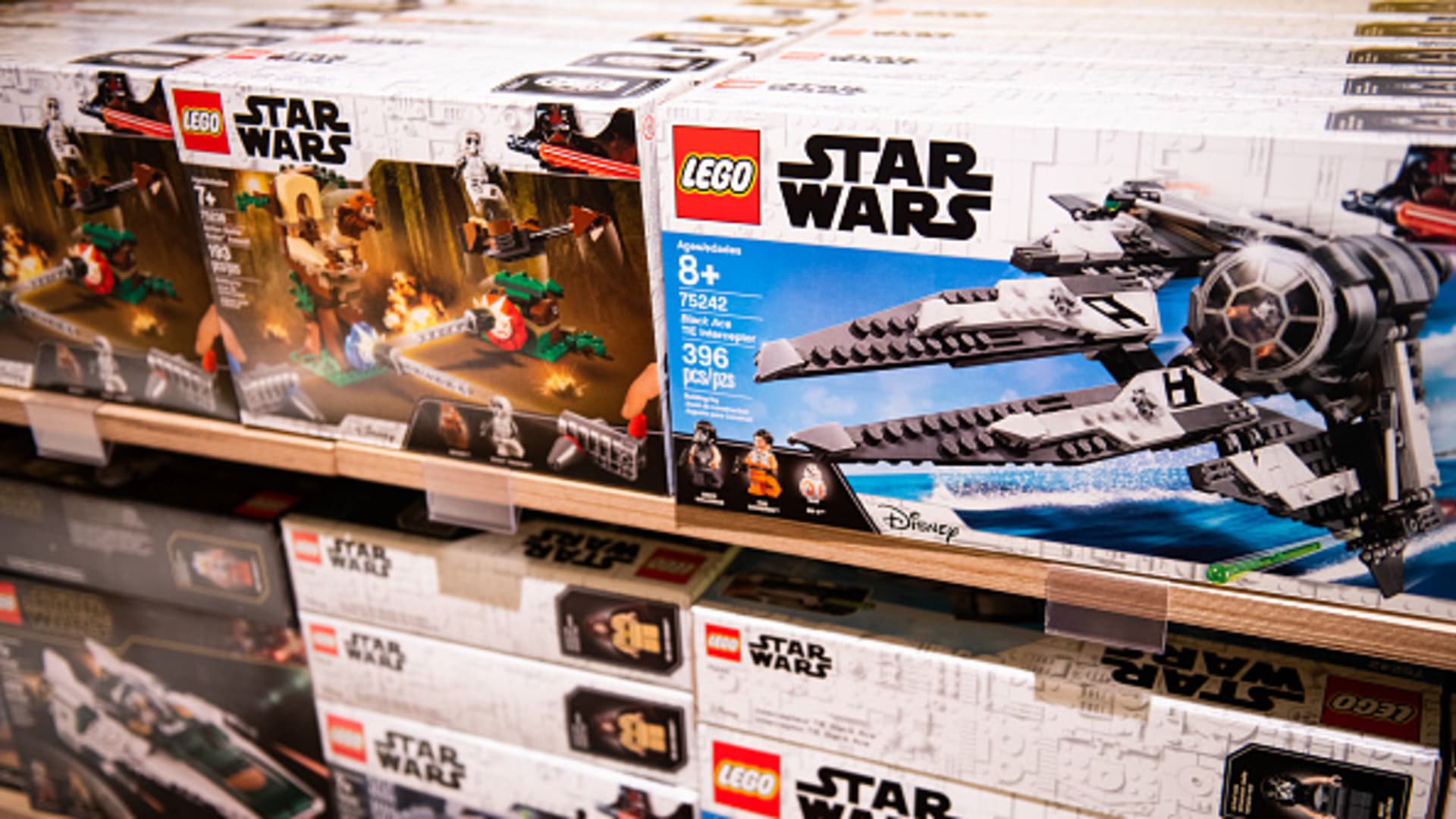Products You May Like
While other toy companies struggle with an inflation-fueled sales slump, Lego is building positive results brick by brick.
The privately held Danish toymaker saw revenue rise 1% during the first six months of this year, reaching 27.4 billion Danish krone, or about $4 billion.
Meanwhile, publicly traded rivals such as Mattel, Hasbro, Funko and Jakks Pacific have all reported double-digit revenue and sales declines so far this year.
“I think what makes me very satisfied is this fact that we continue to outgrow the industry,” CEO Niels Christiansen told CNBC. “The good thing for us is that every year over the last four or five years, we’ve been outgrowing the market by 10 percentage points … that means we’ve been taking market share consistently and that has continued, that’s super important.”
Toy companies across the industry saw massive gains during the Covid-19 pandemic, as parents looked for ways to keep their kids occupied during lockdowns. Adults, too, returned to the toy aisle to stave off boredom.
Lego built on pandemic-era growth, boosted by a diverse slate of products that cater to kids and adults alike, while outperforming the industry and zapping up market share.
Of course, the company has not been immune to macroeconomic pressures, particularly higher costs for material, shipping and energy.
Net profit for the first half of the year reached 5.1 billion Danish krone, or about $742 million, down 17% from the same period in 2022.
Raw material costs were a major expense for the company during the first half of the year, but Christiansen said he expects that to lessen going forward as prices come down.
Lego has offset some of the higher shipping costs by placing manufacturing plants near key markets. For example, the U.S. gets its Lego products from a factory in Mexico. That supply chain will shorten in the next two years as the company opens a new plant in Virginia.
Additionally, Christiansen said strong demand for Lego’s eclectic selection of building sets has helped narrow the gap. Consumer sales grew 3% during the first half of the year.
Christiansen pointed to the strength of Lego’s brand and its diverse product line that hits on a variety of “passion points” for its strong performance so far in 2023. These products range from themed sets of Star Wars to buildable muscle cars and cityscapes.
The company is growing its portfolio to around 750 products this year. About 48% of that portfolio will be new, Christiansen said. That’s on par with previous years and is part of the company’s strategy for having fresh and relevant sets for all consumers.
The company also has been reaping the benefits of opening stores in new markets, particularly in China. So far in 2023, the company opened 89 shops worldwide, with 54 of those in China. The region is newly exposed to the iconic building bricks and physical locations have helped show adults and children how to play with Lego.
“We believe we will end the year at a single-digit growth rate,” Christiansen said. “I believe we can continue to outpace the market.”
